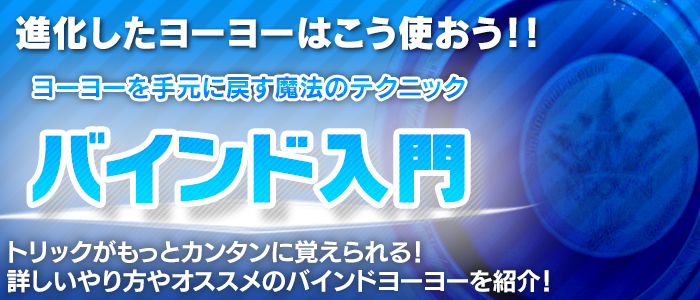
Long sleeping unresponsive yo-yo
-Speed up your progress!
Learning tricks is easier because you can take your time and make multiple attempts with one throw!
-You can return it at any time you like!
You don’t have to worry about the yo-yo coming back in the middle of the trick!
-Trick combo is fun!
With one throw you can do a combo with many fun tricks!
Isn’t it difficult to bind!?
That’s not true!!!
Standard return: throw → pull back
Bind return: throw → place yo-yo on the string → pull back
Just keep that in mind!
Let’s get stated!
Unresponsive play makes yo-yoing more fun!

Table of contents
-Introduction to yo-yo settings and binding instructions
How to bind
First, calm down take a deep breath and throw straight!
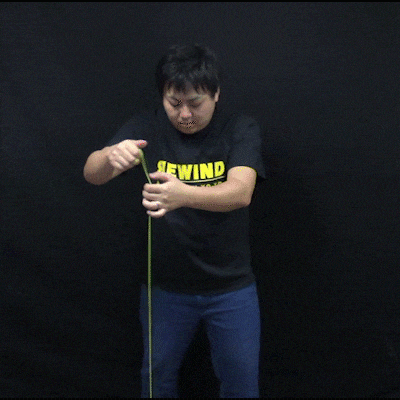
Problem #1 (Can’t get the yo-yo on the string)
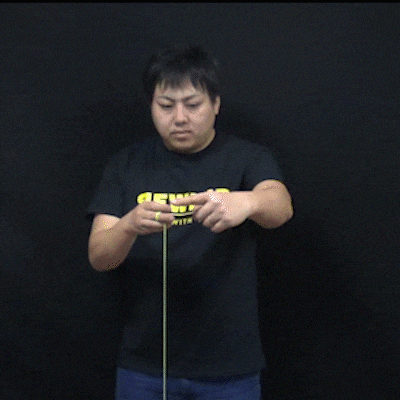
When the yo-yo is thrown at an angle it will slow down fast.
Making it harder to perform the bind because you will need to work faster.
On the other hand if the yo-yo is thrown straight, it will spin much longer.
This will give you more time to perform a bind.First, with the yo-yo not spinning, practice putting the yo-yo on the string.
If the yo-yo is rotating practice hitting the yo-yo against the string.
This will help you learn to control the yo-yos movement.
Problem #2 (the yo-yo tilts and slows down on the string)
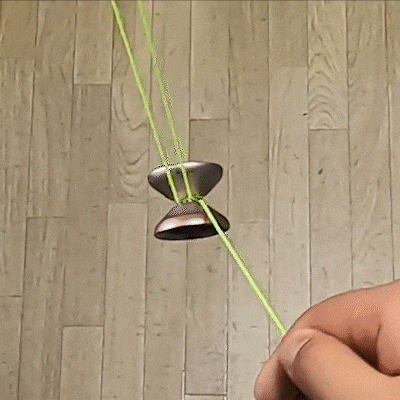
If your hands are far apart and not inline the yo-yo will tilt
Keep your hands close together and inline when the yo-yo in on the string.
Problem #3 (The yo-yo will not come back!!)
Cause 1. The part of the string the yo-yo is on is not being pinched.
The timing of the release is too early.
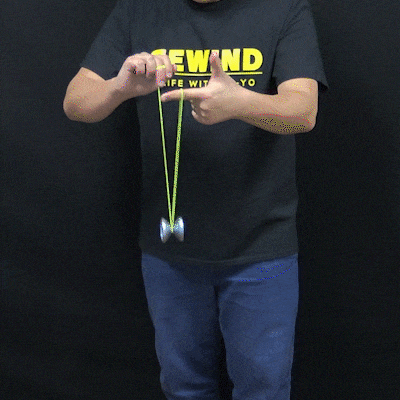
If you try to do a bind without pinching the string, the yo-yo will most likely not return.
When you pinch the string it causes the string to start wrapping around the axle.
You can fell the string being pulled tight and start to wrap up.
So don’t let go until this happens.
Problem #4 (The strings between your finger and yo-yo is too long or too short)
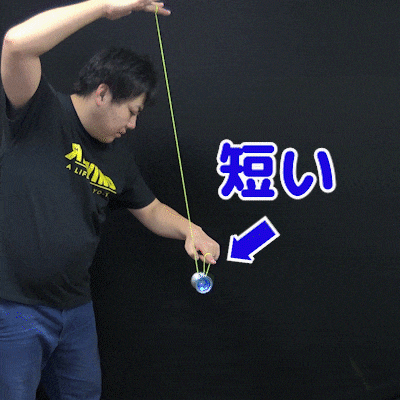
If the distance between the pinched fingers and the yo-yo is too short. The yo-yo will not return.
This is because there is not enough string for the yo-yo to start the bind.
If the distance between the pinched fingers and the yo-yo is too long.
The string can become knotted inside the yo-yo.
If this happens to you, try throwing the yo-yo a few times to release the knot.
Problem #5 (hands are too far apart)
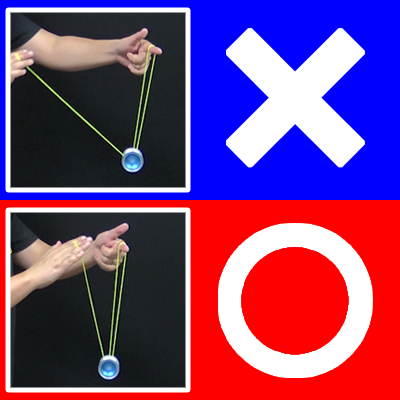
When perform a bind if your hands are too far apart the yo-yo will not return or will wind up too loose.
The solution is easy, try to bring both hand closer together before to start to bind.
*It’s even OK to overlap the strings a little.
If you are still unable to bind, it could be that your yo-yo is not setup right.
Lets go over the proper way to setup an unresponsive yo-yo and some recommendations!

Introduction to yo-yo settings and binding instructions
The recommended yo-yo is!

C3yoyodesign Krown
• Its a best-selling model used and designed by a world champion
• Strong spinning and very stable
• Relatively light and easy to handle
• The shape feels great in the hand
Full metal yo-yos are recommended for learning to bind!
Recommended settings
The first and maybe most important thing is…
String!!
-Thick string is better to bind with.
-Adjust the length to suit you
Bind String for bind.
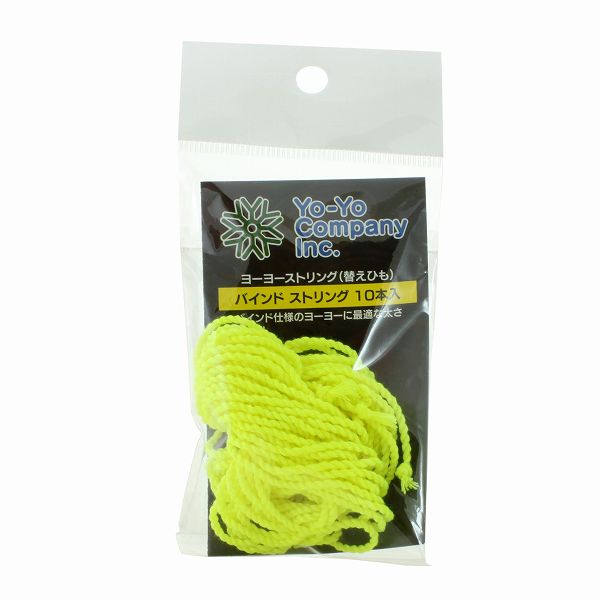
We recommend thick and soft Bind String when first learning to bind.
If you have learned to bind but are having trouble getting the yo-yo to return.
Its time to change the string!
String length is quite important.
If your string is too short, binding will be more difficult.
Please be careful if you are an elementary school student. As it can
be easy to cut the string too short
We recommend to cut the string a few centimeters above the navel.
If your string length is about 90cm to 100cm or more you are in good
shape to bind.
When your binding skill improves, even a shorter string and be bound tightly.
So you have learned to bind and your string is fresh but the yo-yo is not returning as it did before….
Well now its time to do some yo-yo maintenance.
In the next section, we will introduce how to maintain an unresponsive yo-yo!

Unresponsive yo-yo maintenance
If you notice your yo-yo is not returning as it did in the past…
It’s time to replace the pads!
After a lot of use the pads will become worn out and your binds will become too loose.
Let’s replace the pads!
Watch the video (How to replace pads) for detailed instructions.
The yo-yo is jumping back or making a loud noise, clean the bearing!
If dirt or dust accumulates in the bearing it will not spin properly.
This can cause the yo-yo to slow down quickly or rewind unexpectedly.
If you have noticed this happening with your yo-yo you should clean the bearing.
(Bearing cleaning) This video will walk you through the steps to clean out the dust and dirt!

Binding mechanism
The big difference is the string gap width!
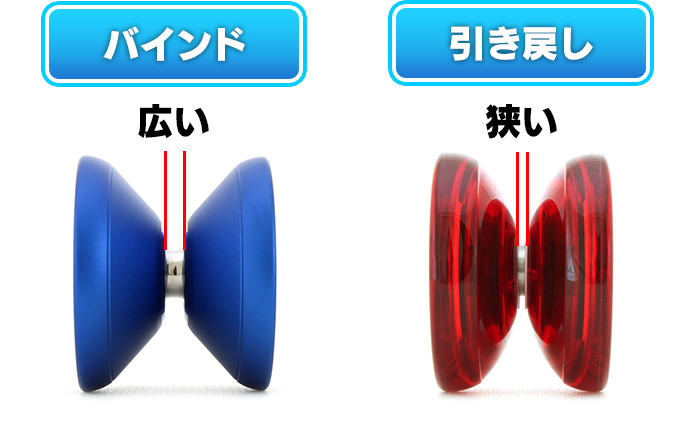

First, the responsive yo-yo rewinds with a quick pull on the string (no bind required).
When you pull on the string it will get caught in the pad or starburst and return to your hand.
However, an unresponsive yo-yo has a much wider gap and pads that are flush with the body of the yo-yo. When you pull the string the pads will not catch
the string and the yo-yo will continue to spin.
Even when you throw and move the yo-yo, with the wider gap the pads don’t make contact with the string. This is why unresponsive yo-yo spin for much longer compared to responsive yo-yos.
The world of unresponsive yo-yoing is growing fast!
Once you can bind, there are many new tricks to learn!
If you’re new to yo-yoing, it’s recommended to learn the Elevator and Rock the baby.
The next step to take is learningBrain twister and Trapeze.
If you attempt a trick and are unsuccessful just bind the yo-yo and try again!
If you are intermediate or above, try learning unique binds and different tricks!
